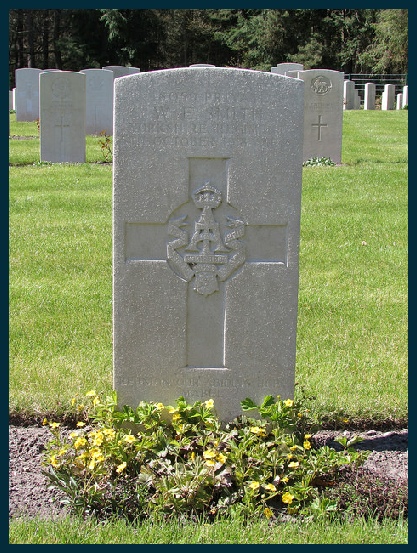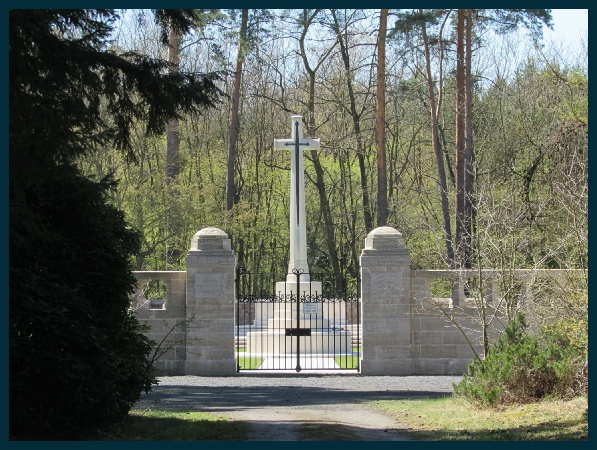Copyright © All rights reserved.



William Smith
William Ernest Smith was born in the third quarter of 1895 in Swinton and his birth was registered in Malton .
William appears to have married Edith Leonora M. Chamberlain in the third quarter of 1910 in Nuneaton. While this seems deeply unlikely, she is identified as his widow on the Commonweath War Graves Comission website. However given his age of, at best, 15 years old, the marriage would have had no validity, and it does not seem to have been a success. Certainly, a year after he is described in the 1911 census as single.
1911 Census – resident at Kirby Wold, Kirby Grindalythe, Wharram, Yorkshire
Robert, Watson, Head, Married, Male, Farmer, 73, Yorks Larthingdale
Sarah Ann, Watson, Wife, Married, Female, -
Jane Elizabeth, Watson, Daughter, Single, Female, -
Mary May, Watson, Daughter, Single, Female, -
John Robert, Watson, Son, Single, Male, Farmer's Son Working On Farm, 26, Yorks Wintringham Common
Sarah Ellen, Watson, Daughter, Single, Female, -
Wilson, Chambers, Servant, Single, Male, Idleman On Farm, 38, Yorks Rudstone
William, Clarkson, Servant, Single, Male, Waggoner On Farm, 23, Yorks Welburn
Thomas, Blackburn, Servant, Single, Male, Beastman On Farm, 38, Yorks Hutton Ambo
George, Green, Servant, Married, Male, Shepherd On Farm, 33, Yorks Hutton Cranswick
William, Smith, Servant, Single, Male, Horseman On Farm, 16, Yorks Swinton
James, Watts, Servant, Single, Male, Horseman On Farm, 48, Yorks Kilham
William seems initially to have enlisted in the RASC before transferring to the 5th battalion of the Yorkshire regiment. He was in 4 company – one of the Horse transport companies that actually kept the army on the move. Each Division of the army had a certain amount of transport under its own command, known as the Divisional Train. It was the ‘workhorse’ of the Division in terms of carrying stores and supplies, providing the main supply line to the transport of the brigades of infantry and artillery and other attached units. It initially comprised 26 officers and 402 other ranks of the Army Service Corps, looking after 378 horses, 17 carts, 125 wagons and 30 bicycles. These comprised a headquarters and 4 Horsed Transport Companies (one for each infantry Brigade and one for Divisional HQ and other troops). The Train moved with the Division. In all, there were 364 ASC Companies of this type. 4 Coy. pre-
The beginning of 1917 saw the battalion moved to Arras and there sustaining further heavy losses. Through August and September they continued to undergo heavy bombardment and regular severe casualties.
During the last quarter of 1917, William was clearly back in the Malton area, as during that quarter he married again. This time his bride was Emily Mabel L. Lawman, a young lady from the Wellingborough area. Whether his previous marriage had been annulled or whether this was a bigamous marriage is not clear, but it seems likely that William had some doubt about the legitimacy of the enterprise.
In October, the battalion was moved to the Ypres Salient and after a period of training found themselves again on the front line, sustaining heavy losses at the end of the month. This pattern continued in November, with a carefully structured training programme of fitness, musketry, specialist disciplines (gas, bombing etc) and of course drill.
December saw them alternating between support and frontline, continuing to lose men both to enemy action and disease. January saw them alternating support and training before a return to the front line in February.
The Russian Revolution and that country's subsequent withdrawal from the War in the East had allowed the Germans to transfer troops to the Western Front. On the 21st of March 1918 they were ready to launch 76 Divisions against the 28 of the Allies along a 50 mile Front in the St Quentin area, presumably to split the British and French Armies, capture the Channel ports and thus cut off the British Army and prevent further landings. The news that America had belatedly entered the War meant they had to take decisive action before they were outnumbered. The 5th Yorkshire Battalion were thrown right into the centre of this onslaught. Each side would lose around a quarter of a million men.
As the German offensive on the Somme ground to a halt on the 5/6th April another opened on the Front between Ypres and Bethune and within days the 5th Battalion, exhausted and with many raw recruits were back facing the Storm troopers. On the 9th they arrived at the town of Estaires, finding it heavily shelled and the main street impassable. They moved forward in support of 4 East Yorks in touch with 4th Yorks on Left, but not in touch with 5th DLI on Right. “A” Company was sent forward and filled the gap, linking with 4th East Yorks on Left and 5th DLI on Right.
Next day orders were received to move up at once in support to 4th Yorks. The Battn moved at once and was in position astride the road at 6,30 am.
At about 11.00 a.m information was received that the enemy having crossed the River Lys at Bac St Maur was then occupying La Boudrelle. 3 Companies were immediately sent forward to form a defensive flank and came under direct and heavy Machine Gun and Light Field Artillery fire and suffered casualties. During the heavy shelling and confusion a new line had to be established, which was held for the remainder of the day and all night. There was continuous rifle fire and constant demands for small arms ammunition and heavy casualties were undoubtedly inflicted on the enemy.
The next morning the enemy attacked the Left flank heavily. The Middlesex on the Left withdrew, but the 5th Yorkshires held on till practically surrounded and many were captured or left wounded, it being impossible to get them away. At 1.00 pm orders from BGC of 150th Infantry Brigade were received from the joint HQ of the 4th and 5th Yorks to form a stragglers post to collect all men of the 150th Infantry Brigade. Men were collected and the 150th Infantry Brigade formed a Battalion under Lt Col Thomson, though a very weak Battalion.
The force collected was instructed to move to Brigade HQ at Vierhouck. At about 6.00 pm the amalgamated Battalion with several stragglers from other Regiments were stopped by a representative from the 150th Infantry Brigade and informed that the enemy were in Neuf Berquin and told to form a parallel to and on the South East side of the road that they were on. This was done, but casualties were severe from a Light Field Gun of the enemy's. Orders from 150th Infantry Brigade received about 7.00 pm instructed the force to hold on till darkness at all costs and then if unable to hold withdraw and move to Vierhouck. At about 8.30 pm the position having become untenable and both flanks being in the air, Col Thomson ordered the Battalion to move as directed and they reported Brigade HQ at about 10.30 pm.
At 5.00 a.m next morning the Battalion was ordered to take up a Line parallel to the road and about 5.45 am, 3rd Coldstream Guards arrived and began to dig in on the line of the road. The enemy advancing caused the line to withdraw on the C Guards. The Battalion was assembled and took up a position on the Right of the Guards, where it linked up with some men of the 7th DLI who then came under Col Thomson's orders. In this position the mixed Battalion held on until about 4.00 pm. At about this hour some detached posts of the Guards were surrounded and had to surrender. This and constant Machine Gun fire and sniping started a withdrawal of the mixed men. These were rallied and reformed but the situation remained obscure with two men dead and 175 wounded or missing.
On the 14th April, Working Parties were set to work to dig a Reserve Line. The Battalion was then held for digging purposes, but the tactical position was such that if the enemy broke through, the Battalion would hold the Line they were digging. Two days later the Battalion moved to La Lacque till the 25th. Next day they marched to Unchair where they stayed training until 7th May when they moved into trenches at Craonne. On 15th they moved into billets at Beaurieux in Divisional Reserve training until 21st when the Battalion moved into trenches and relieved 4th Yorks Battalion. Life in the trenches continued as usual until 25th May when the Battalion War Diary records 5 Other Ranks killed. There is no record of any men missing, but the German prison records record William as entering their system that day. He was sent to the Prisoner of War camp at Lamsdorf, where he gave his next-
It was at Lamsdorf that William died on 5th October 1918 and he was finally buried in Berlin South-
Despite any misgivings he may have had, Mabel duly received the gratuity from the government. Edith seems to have re-
William is commemorated on the Town Memorial and on the memorial in St Michael’s Church.

